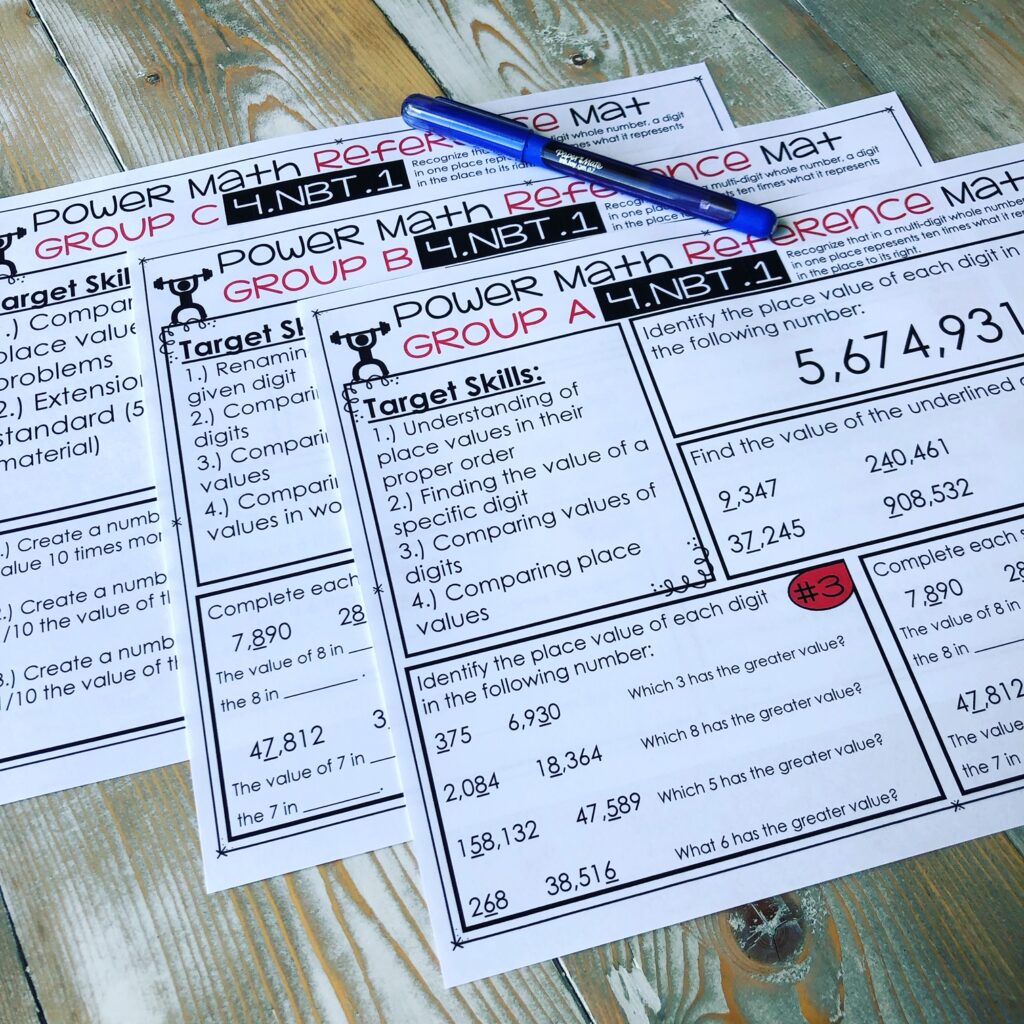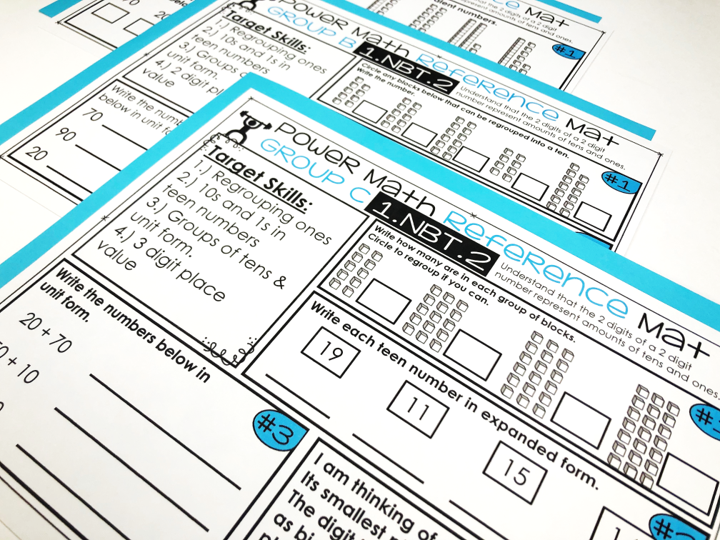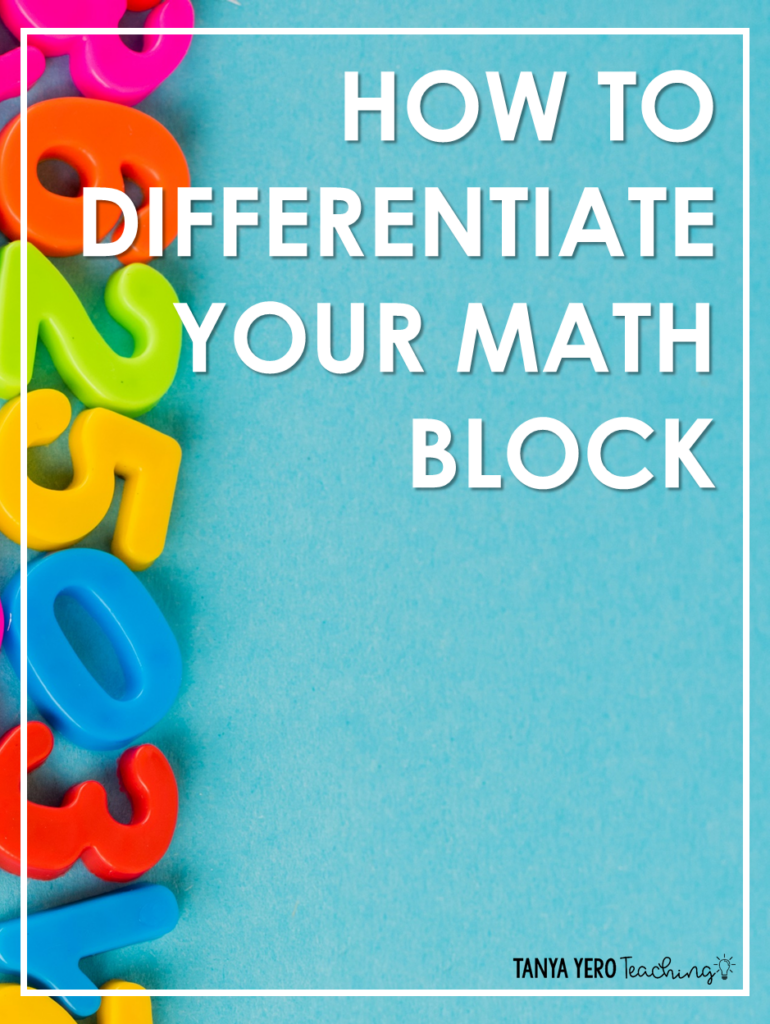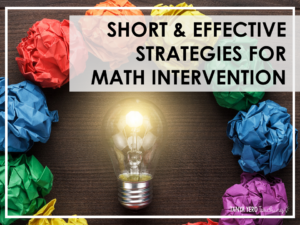Your students all learn differently and at different paces. While some students may come in your classroom with certain standards already mastered, others may struggle with basic skills. That’s why differentiation is so important. To challenge and help all learners meet their standards, it’s vital to meet your students where they’re at. With so many different learning styles and understandings in your classroom, differentiating can be challenging in math class. Learn how to start differentiating during your math block!
Start small!
Don’t feel like every day has to be completely differentiated. At the start of a unit, for example, you’ll most likely introduce the lesson as a full group. Using rotations or centers is an easy, effective way to differentiate instruction. Use once-a-week complete rotations or use periodic centers to start out with small, simple lessons. While most students are completing activities in their rotations, you can work 1-on-1 or with smaller groups that need additional help.
Group your students by ability.
In your rotations, students can be grouped by ability. This helps students who have mastered the standards to be challenged and work on extension materials, students who are still mastering the the standards focus on their grade-level skills, and students that are struggling to receive scaffolding and additional 1-on-1 support.
Use data to group students.
Use data from your own formative assessments or pre-tests to group students. In addition, your school or district may implement progress monitoring tests like Measure of Academic Progress (MAP) that has tools in the reports that will group students according to mastery in specific skills. Your groups may change depending on the concepts and standards your teaching. While some students may be proficient and specific concepts, they may struggle or need additional help when new content comes up. Be flexible with your groupings and use data to inform your instruction.
Tier the work that you complete in the rotation.
In your rotations, you’ll have three levels of students. There may be more than one small group for each level, typically with the on grade level students. I love using Guided Math Reference Mats that focus on various concepts and skills throughout the year. Every math reference set has three differentiated levels. The mats look similar, so your students will feel comfortable with the content they are receiving. Group A is for students who are in need of remediation, Group B is for students working on grade level, and Group C is for students who need enrichment. You’ll introduce the activities as a whole group, then have students get into their rotation groups. Because the activities are now digital as well, these can be completed at home during distance learning as independent work.

Have struggling students work their way up to on grade level work.
Even if your students are working on Group A material, they shouldn’t necessarily stay there all year! Encourage and help struggling students make their way up to grade-level work. Some students that really struggle with math may not make it there, but it’s important to give them all the tools and support they need to go beyond the scaffolded instruction.

Differentiated work should be span across MULTIPLE grade levels.
Although you should try to stay on grade level as much as you can, it’s important to review prior year content and challenge students who have met the standards to go beyond the current grade’s content. Your standardized testing is on grade level and the assessments you are expected to give throughout the year according to your district are too. In addition, each grade level in your school should be differentiating instruction. Work together with your staff or department to help all students receive differentiation in math.
Keep data.
Keep assessment and skill data on students, especially those who are in need of intervention. When considering testing students for special education, they don’t just jump into services. It’s important to take notes and keep data to support additional intervention and service needs. Learn more about how to effectively use intervention in your math instruction. Get started differentiating during your math block by using rotations, challenging your students meeting standards, and helping your students in need of interventions get additional support.






